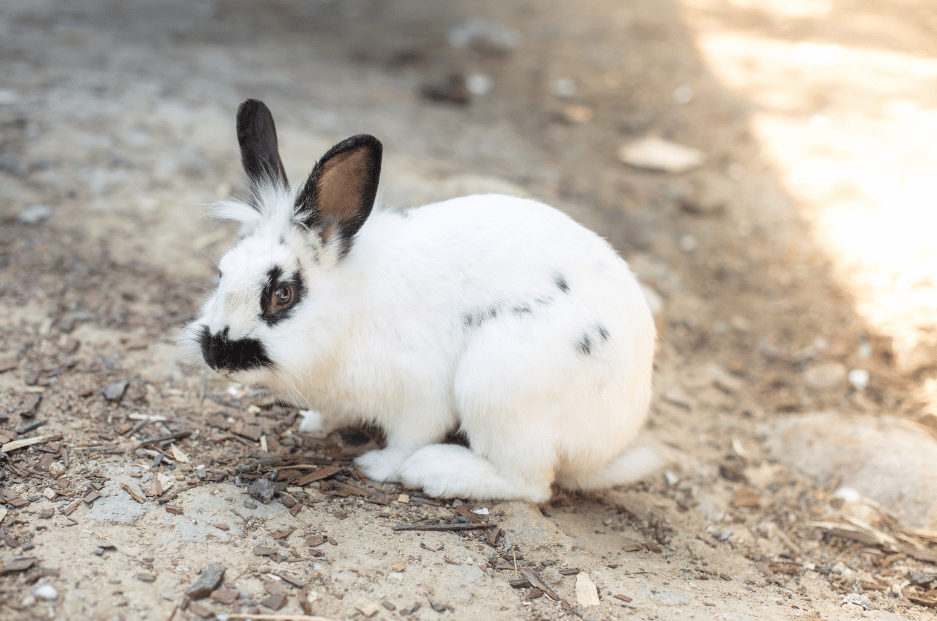
Breed facts
Size
1,13-2,26 kg
Look
Short, white, flyback fur with dark markings on the feet, tail, ears, and an egg-shaped mark on the nose.
Temperament
Very patient and calm.
Care requirements
Very sensitive to cold . Otherwise easy to care for.
Behavior With Children
They have a gentle and patient temperament which makes them a great match for children.
Health Concerns
No notable health concerns beyond regular rabbit care.
Life expectancy
5–8 years
Breed facts
Size
1,13-2,26 kg
Look
Short, white, flyback fur with dark markings on the feet, tail, ears, and an egg-shaped mark on the nose.
Temperament
Very patient and calm.
Care requirements
Very sensitive to cold. Otherwise easy to care for.
Behavior With Children
They have a gentle and patient temperament which makes them a great match for children.
Health Concerns
No notable health concerns beyond regular rabbit care.
Life expectancy
5–8 years
The Himalayan bunny is one of the ancient rabbit breeds on the planet, with little information about its origins. Himalayan rabbits originally appeared in Asia and Middle East; they are often mistaken with the Californian breed because of their similiar looks.
They proved to be a successful pet breed due to their patience and quiet demeanor.
When Himalayans are raised in cold climates, they can exhibit black coloration of their coats, making them a phenocopy of the black rabbit ,unlike many other breeds, were never raised primarily for meat.
”Himalayan rabbits are known for having a double copy of the ch gene and a mutated albinism gene which causes the differences in eumelanin and pheomelanin production. The mutation is what creates the specific markings.”
”Most babies in the warmth of the nest will look the same as albino babies. The reason for this is that Himalayans can only produce eumelanin under a certain temperature and they cannot produce pheomelanin at all. ”
Unique qualities they have
”Himalayans are the only breed posed stretched out (cylindrical)
Himalayan rabbits are a common youth breed and are well known for their good temperament.
European Himalayans and American Himalayans have different poses.
Himalayans commonly have an extra set of teats.
Himalayans are one of 4 breeds that can be moved up to senior class regardless of their weight.
Himalayan rabbits are very good mothers and are used often used to foster kits from other rabbits.
The breed slogan "MAJESTIC BEAUTY OF THE AGES" ties into the long and illustrious nature of the Himalayan's history.”
Kaniner
Must read articles about rabbits
Kaniner
Must read articles about rabbits
The Himalayan bunny is one of the ancient rabbit breeds on the planet, with little information about its origins. Himalayan rabbits originally appeared in Asia and Middle East; they are often mistaken with the Californian breed because of their similiar looks.
They proved to be a successful pet breed due to their patience and quiet demeanor.
When Himalayans are raised in cold climates, they can exhibit black coloration of their coats, making them a phenocopy of the black rabbit ,unlike many other breeds, were never raised primarily for meat.
”Himalayan rabbits are known for having a double copy of the ch gene and a mutated albinism gene which causes the differences in eumelanin and pheomelanin production. The mutation is what creates the specific markings.”
”Most babies in the warmth of the nest will look the same as albino babies. The reason for this is that Himalayans can only produce eumelanin under a certain temperature and they cannot produce pheomelanin at all. ”
Unique qualities they have
”Himalayans are the only breed posed stretched out (cylindrical)
Himalayan rabbits are a common youth breed and are well known for their good temperament.
European Himalayans and American Himalayans have different poses.
Himalayans commonly have an extra set of teats.
Himalayans are one of 4 breeds that can be moved up to senior class regardless of their weight.
Himalayan rabbits are very good mothers and are used often used to foster kits from other rabbits.
The breed slogan "MAJESTIC BEAUTY OF THE AGES" ties into the long and illustrious nature of the Himalayan's history.”



